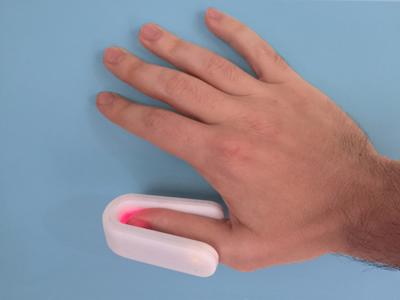Open Source Pulse Oximeter & Remote Monitoring Service
Open Oxi is a small wireless device designed to aid doctors in remote monitoring situations.
It embeds a pulse oximeter that senses heart rate, oxygenation, and temperature, but instead of being displayed locally, this data is streamed to a server where medics can track multiple devices/patients at once.
Why Open Oxi
After interviewing doctors in the COVID-19 emergency response unit in Ancona, Italy we discovered that these devices are becoming a key element in monitoring non hospitalised patients: by daily calling to ask for their readings, medics can look after them while keeping precious hospital bed available for those in most need. However this operation especially at peak times, can take a considerable amount of doctor's time.
Automating the process of data reading and aggregation could save time, reduce stress, improve the quality of care for non-hospitalized patients, and give public health institutions a tool to forecast the number of intensive care beds needed in the next fortnight.
User consideration
We know that the demographic most likely to be vulnerable to COVID-19 is those aged 50+. Given that this group is also less likely to be familiar with the internet and less likely to own a smartphone, we have designed Open Oxi to communicate via GSM to the server, with no smartphone or internet required.
Service centered design
Not having a mobile app also enables a quicker deployment. The only touchpoints are a web interface for the medics and an instruction leaflet for the patient or a caregiver, with notifications and results sent via SMS.
With speed to deployment in mind, we adopted the Value Proposition Design framework to cluster our insights, make rapid decisions and prioritise development features with a MVP in mind
Open Source and future vision
The proof of concept has been developed using only off the shelf electronic components, the body and the code will be made available as open source; next iterations will follow the same strategy to enable everyone to replicate Open Oxi anywhere.
We believe that the fundamentals of this framework (Open Source, Off the Shelf, GSM based) could also be beneficial in other contexts, such as countries on level 3 and 4 where distance between patients and doctors and number of patients per doctor are known challenges.

Medical tags
- Clinical need
- Monitoring purpose
- Area
- Public health
- Technology
- Monitoring device
- Project keywords
- UBORADesignCompetition2020, Pulse Oximeter, GSM, 3D printing, User Centered Design, Service Design
- Device classification
- IIa